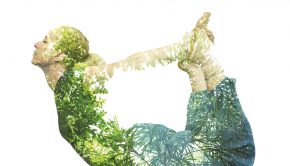Wilderness in Sidewalk Cracks, Small Nature Reaches Out to City Kids
City kids are often taught that nature is out there beyond the city limits, but one science educator and photographer shows how everyday nature has the power to transform.
You can take Molly Steinwald out of the city, but you’ll never get the city out of her. Growing up as a free-school-lunch kid on the outskirts of Manchester, New Hampshire, she notes, “I didn’t do the skiing and mountain climbing thing.”
Instead, she found solace watching ants parade across the sidewalk or tracing the intricate lines on a leaf. Yet when she graduated from high school, Steinwald traveled as far as she could from those city streets, earning a degree in biology, and then a master’s degree in ecology researching kangaroo rats in Arizona’s Chiricahua Mountains.
Still, the city always tugged at her. “I was really excited about big nature,” Steinwald says. “But I kept coming back to small-scale, mundane nature that I knew as a kid. I felt I needed to get back to help people who never see this stuff.”
Today, Steinwald is doing just that. She is now pursuing a Ph.D. researching human interactions with nature in built environments. As director of science education and research at the Phipps Conservatory, in Pittsburgh, Pennsylvania, she has been charged with reimagining urban environmental education and reaching out to at-risk youth. Her basic assumption is: One doesn’t have to go to a national park, or even a city park, to connect with the natural world. It’s crawling past us on the sidewalk or drifting through the air right under our nose.
That, she says, is where city kids can forge a lasting connection with nature—if they’re paying attention. As one of the many ways to get kids to tune in, Steinwald directs programs that arm them with digital cameras and challenges them to take pictures of the fragments of nature they find on the streets. The approach is a departure from the belief held by some that “nature” is defined as parks or green spaces—places apart from our everyday lives.
Lisa Graumlich, dean of the University of Washington School of the Environment, in Seattle, Washington, says Steinwald is making waves in environmental education circles: “She was an urban kid. She brings the voice of someone from a different economic class to the table.”
Graumlich says it makes intuitive sense that connecting with street-level nature will help build a lasting bond with the natural world. The next challenge is figuring out how to provide kids with more of these experiences: “It may be as simple as a mom walking home from the bus stop with bags of groceries and two children in tow, feeling like she has time to look at a sidewalk crack with them.”
“A lot of nature in the city is really small,” Steinwald observes. “I want to show these kids that even if their nature is small, it’s still darned good nature.”
Greg Hanscom is a senior editor for Grist.org, in Seattle, WA.
<












